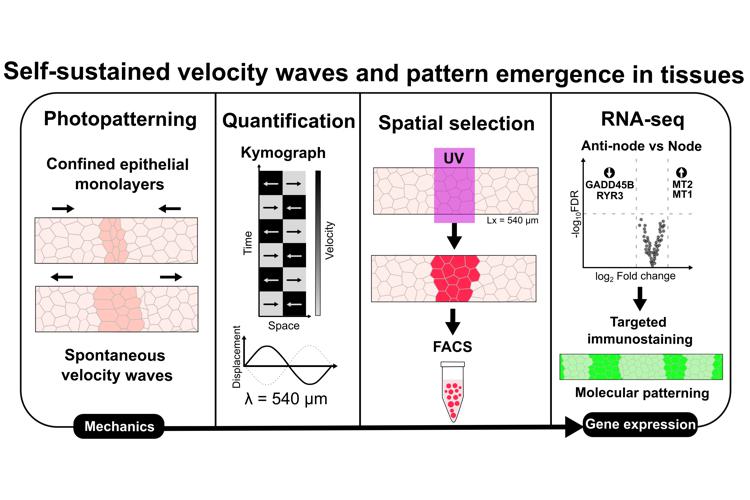- Share
- Share on Facebook
- Share on X
- Share on LinkedIn
Thesis defence
On December 9, 2025

Génésis Marquez-Vivas (Microtiss, LIPhy)
Morphogenesis integrates chemical gradients with tissue mechanics to coordinate cells across space and time. While reaction–diffusion explains many patterns, developing tissues can also transmit information through self-generated stresses. Here we show that confined epithelial monolayers autonomously generate standing waves that provide positional landmarks and a temporal cue in the absence of external driving. We cultured MDCK monolayers on microfabricated band patterns, performed long-term imaging, and quantified flow fields by particle image velocimetry. Varying the confinement length reveals a size-dependent transition: short tissues undergo global oscillations, whereas longer tissues reproducibly form standing waves with fixed nodes and antinodes. Beyond this transition, the oscillations exhibit robust intrinsic scales, with wavelengths of hundreds of micrometers and periods of a few hours. Using spatial photoactivation and FACS, we isolated cells residing at nodes and antinodes for transcriptomic profiling. Differential expression and immunostaining revealed mechanical niches, with specific protein markers forming position-locked spatial patterns that recapitulate the wave’s length scale. Together, these results show that a self-sustained, geometry-constrained oscillatory state can template spatial molecular identities in an otherwise uniform epithelium, providing a tractable route to connect mechanics, collective migration, and gene regulation across scales.
Date
14:00
Localisation
LIPhy, salle de conférence
- Share
- Share on Facebook
- Share on X
- Share on LinkedIn